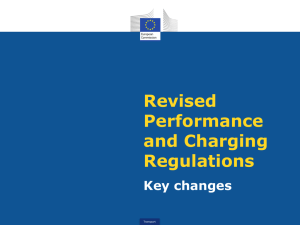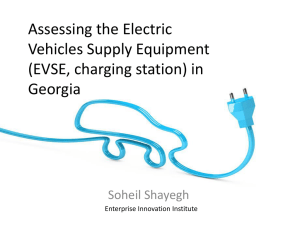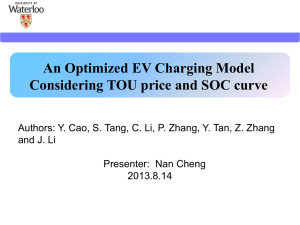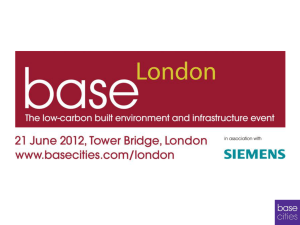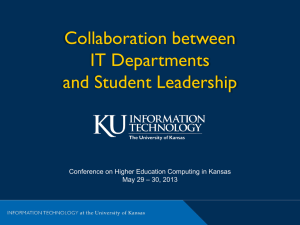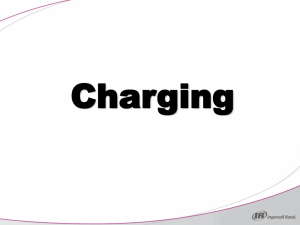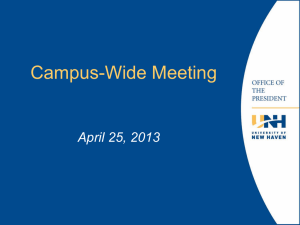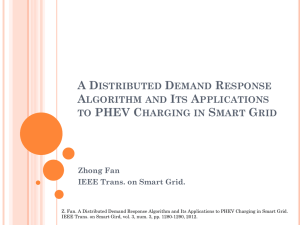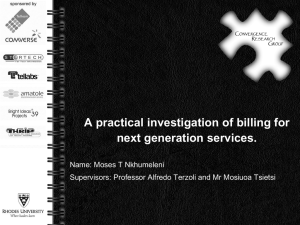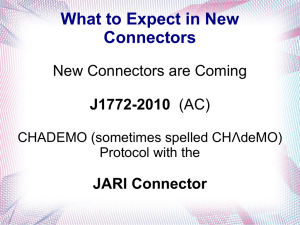Diamter Protocol and Ericsson Diameter Charging SDK
advertisement
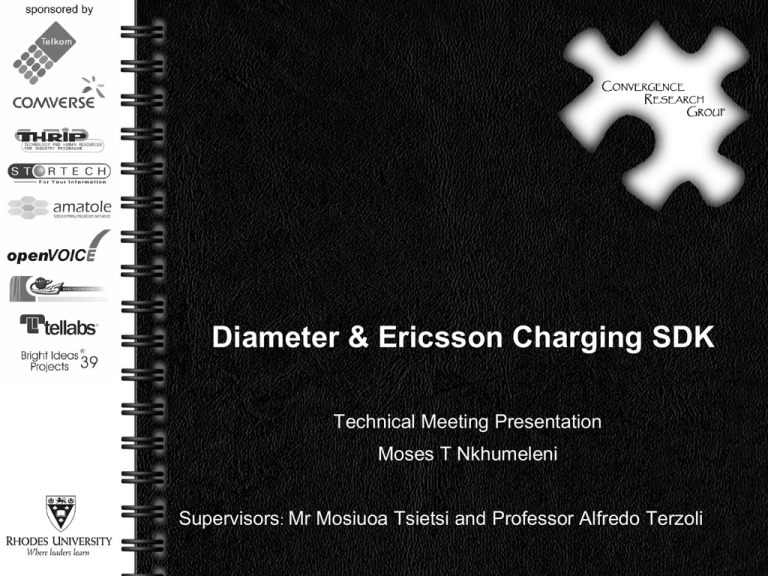
Diameter & Ericsson Charging SDK Technical Meeting Presentation Moses T Nkhumeleni Supervisors: Mr Mosiuoa Tsietsi and Professor Alfredo Terzoli Page 1 Introduction Topics – Diameter Protocol – Ericsson Charging SDK – Research Project Page 2 Diameter Introduced by IETF, RFC 3588 Diameter used to perform AAA(Authentication, Authorisation , and Accounting) Introduced as a replacement for RADIUS – Radius runs on unreliable UDP – Diameter runs on TCP Page 3 Diameter Message Diameter message contains header information and number of AVP(Attribute Value Pairs) AVP’s contains data Diameter Message can be – Request or an Answer Page 4 Diameter Commands Command Name Abbreviation Command Code Abort-Session-Request ASR 274 Abort-Session-Answer ASA 274 Accounting-Request ACR 271 Accounting-Answer ACA 271 Session-Termination-Request STR 275 Session-Termination-Answer STA 275 Page 5 Ericsson Charging SDK Goals – Develop applications quickly – Provides a testing environment – Provide High-level API to abstract away from Diameter Base API Page 6 Charging SDK Contains – A test client • Used to set up connections to the server • You can set up connection parameters such as PeerID, Realm, Vender ID, and IP address – A test Server • Acts as an emulator • Responds to request from the client • Contains DB with accounts, currency and tariff info – Charging API • The charging API implements the Diameter Base API • Provides high level abstraction Page 7 Charging API SCAPv2 API HLAPI DCC API Diameter Base API Page 8 Demonstration Event based java program Page 9 The Research Project A number of charging Models have been identified Event-based Time-based Volume-based Reward-based Subscription-based Page 10 Systems under development Systems under development as proof of concept – Messaging system • Event-based charging model – Session system • Time-based charging model Page 11 Session System Extended from the sip B2BUA mobicents application. Page 12 Conclusion Diameter Base protocol improves on former RADIUS protocol. Ericsson Charging SDK simplifies the development of charging application. Ericsson provides a testing environment Next step we look at more advanced services – That incorporate volume based, and reward based charging model. – Consider applications that uses a combination of the two charging models e.g event-based and session based charging model. Page 13 Questions Page 14
